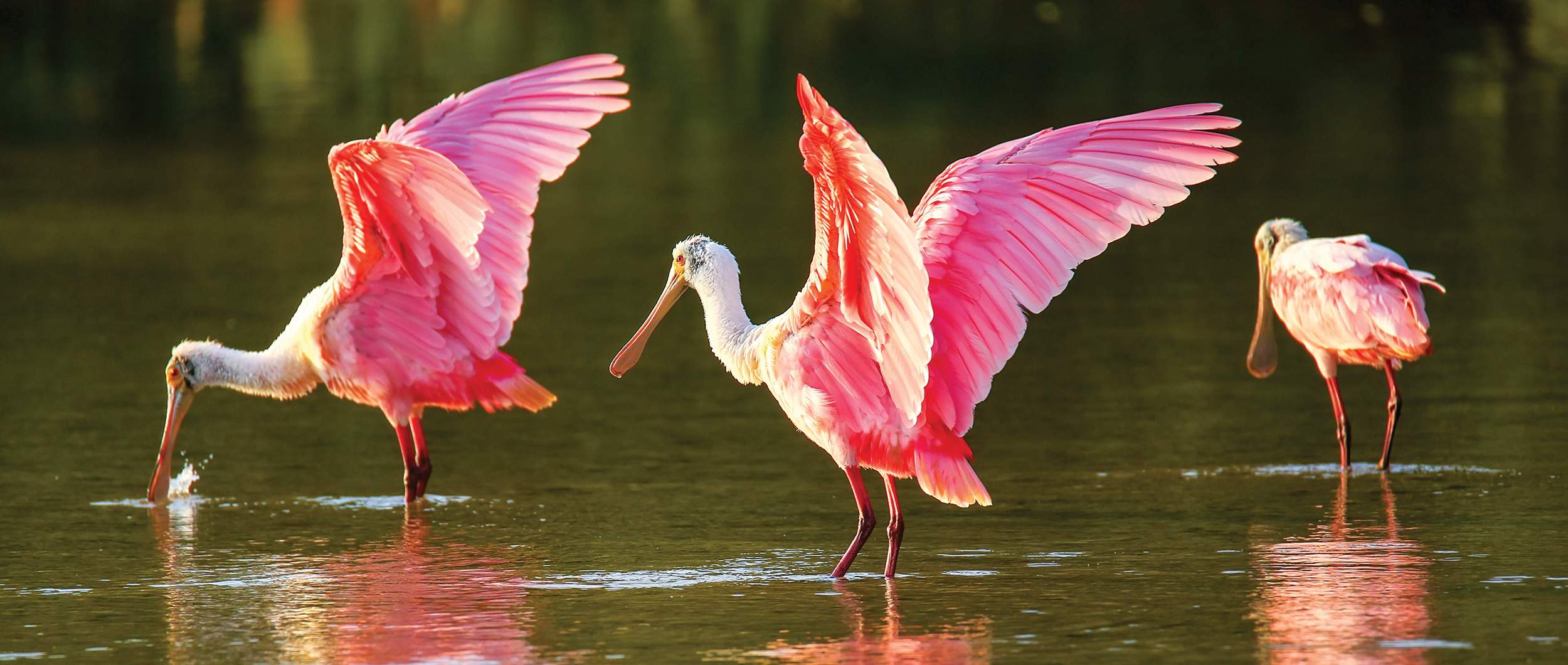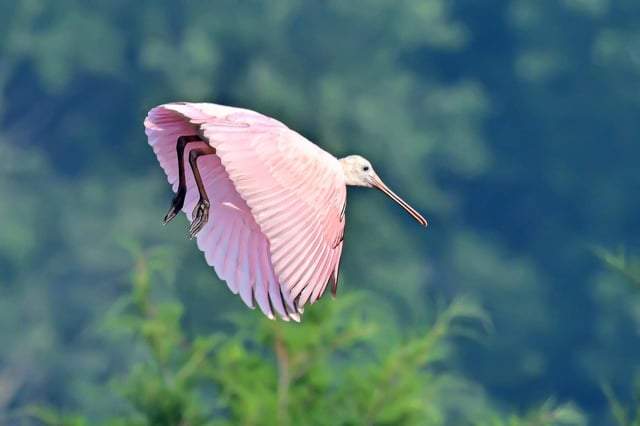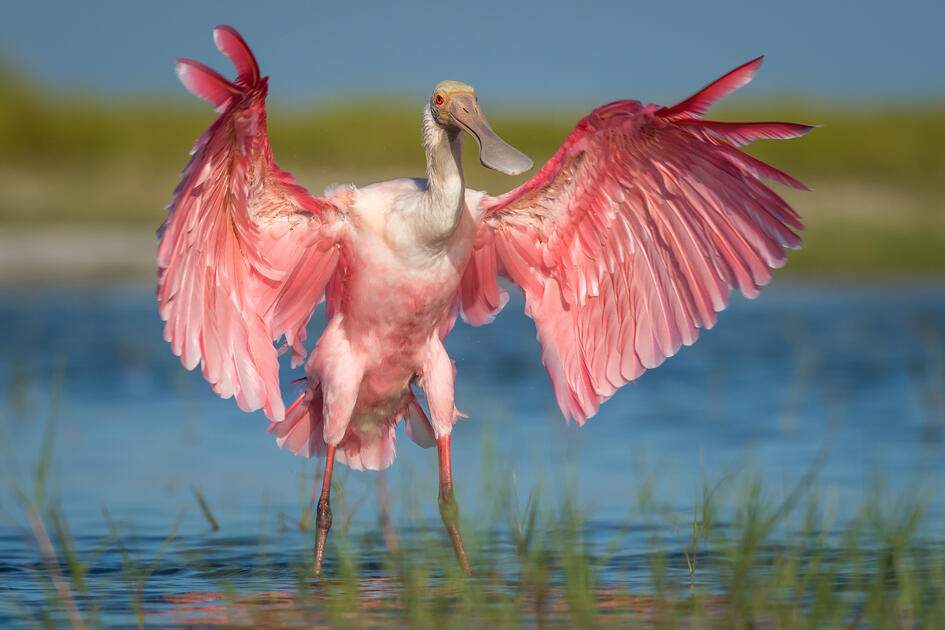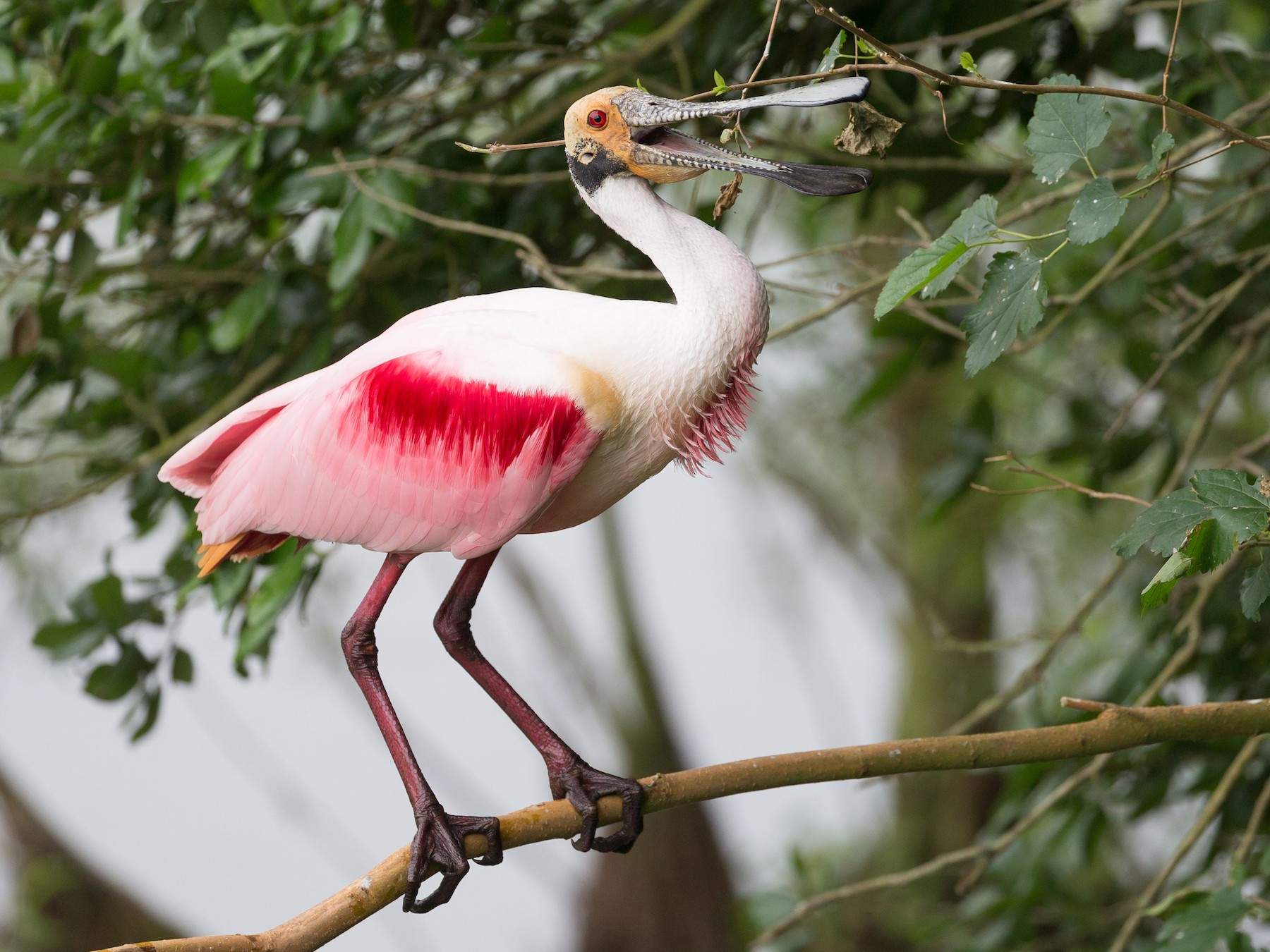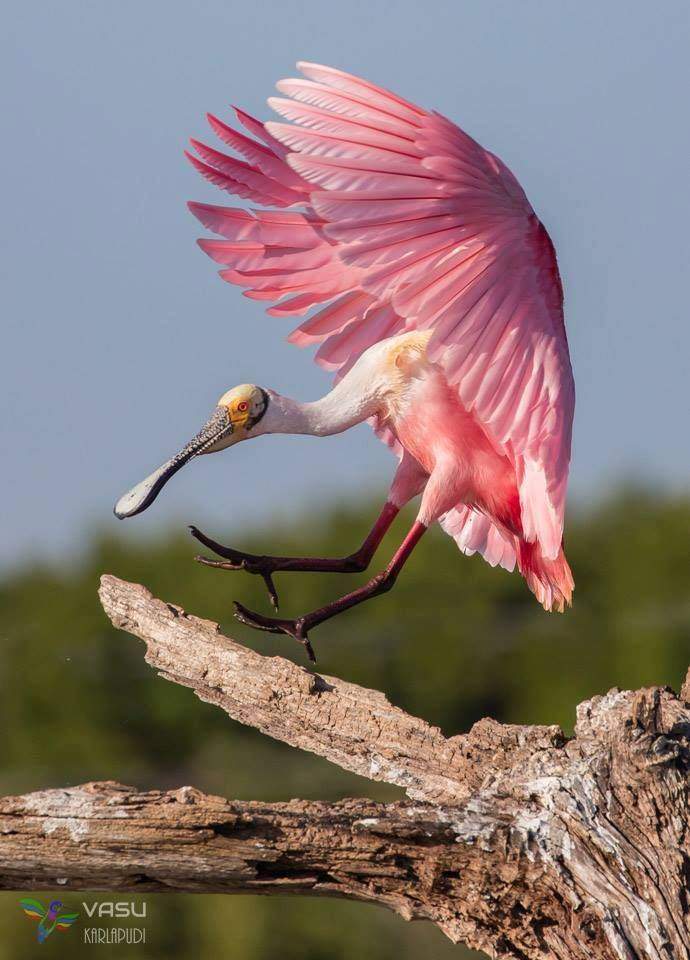Unveiling the Enchanting Roseate Spoonbill: Elegance of Pink Plumage and Distinctive Spoon Bill
The Roseate Spoonbill never fails to captivate the hearts of bird enthusiasts and nature aficionados alike, thanks to its remarkable appearance – a ballet of pink plumage, slender legs, and an unmistakable spoon-shaped bill – setting it apart amidst the realm of wading birds. Yet, its allure transcends the boundaries of mere aesthetics.
In terms of both form and function, the Roseate Spoonbill presents itself as a medium-sized wading bird, standing tall at around two and a half feet, with an impressive wingspan stretching to approximately four feet. Its most distinguishing feature, the broad and flat spoon-like bill, is nature’s adaptation, enabling it to delicately sift through mud and shallow waters to secure its prey. During the breeding season, this avian marvel dons an even more vibrant guise, adorned with a deep, entrancing shade of pink. Observing it in its natural habitat is an awe-inspiring spectacle that resonates with the essence of the wild.
The realm of habitat and distribution finds the Roseate Spoonbill gracing parts of the United States, Central and South America, and the picturesque Caribbean. It manifests a preference for wetlands, marshes, and the fringes of shallow coastal domains, where the abundance of nourishment beckons. Regrettably, the bird’s range has experienced a gradual decline, a consequence of habitat loss and degradation. However, it resiliently persists in various pockets across its territory.
A sociable creature by nature, the Roseate Spoonbill often seeks the companionship of its kin, nesting harmoniously within sprawling colonies of fellow wading birds. Its daytime activity rhythm echoes the sun’s journey, as it engages in its pursuit of sustenance. The menu mainly consists of small fish, crustaceans, and insects – a buffet that owes its capture to the ingenious spoon-shaped bill. With rhythmic sweeps, it combs through the aquatic tapestry, sifting nourishment as it sways. Although its dietary preference leans towards these diminutive creatures, occasional deviations towards small mammals and amphibians have been noted.
The discourse on the conservation status of the Roseate Spoonbill emerges as a poignant narrative. Presently, it enjoys the modest distinction of being categorized as a species of least concern on the International Union for Conservation of Nature’s (IUCN) Red List of threatened species. However, shadows of concern loom, for localized population declines have been attributed to the peril of habitat loss, hunting, and the toxic embrace of pollution. In an endeavor to preserve this avian marvel for posterity, conservation organizations take center stage, rallying support to illuminate the vital role that wetlands and marshes play as sanctuaries for the Roseate Spoonbill.
In summation, the Roseate Spoonbill emerges as an enigmatic ambassador of nature’s elegance, deserving both admiration and safeguarding. Its distinct demeanor and appearance offer a riveting canvas for further exploration. Through concerted efforts towards habitat conservation, the continuation of this remarkable bird’s legacy can be secured, allowing it to grace our ecosystems with its resplendent presence for generations yet to come.
Hits: 4
